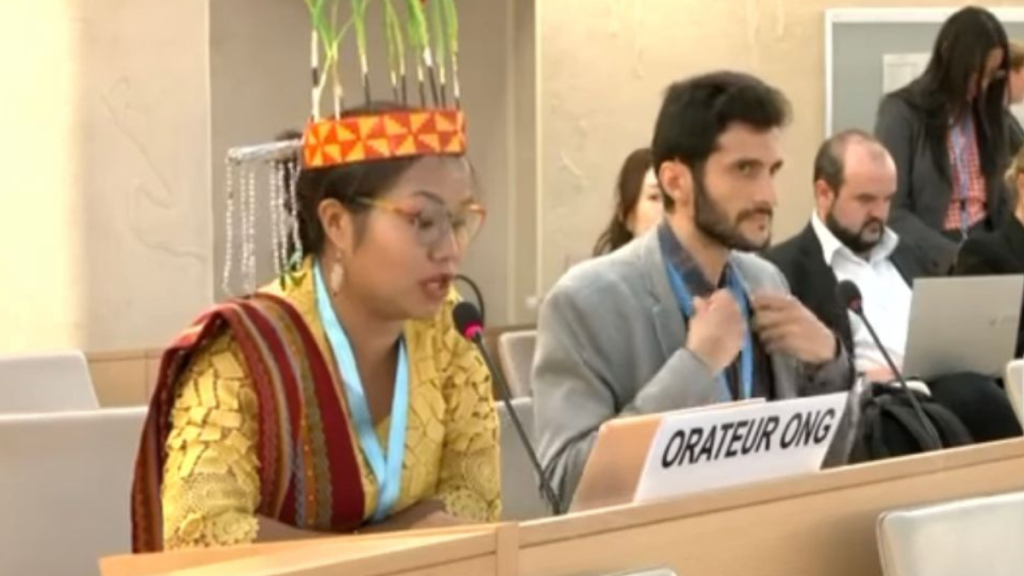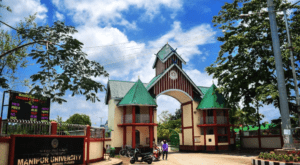Unau is your digital destination for celebrating the essence of brotherhood across the Kuki, Mizo, Zomi, and Hmar tribes.
In recent weeks, social media platforms and news outlets have been abuzz with discussions about Alinery Lianhlawng, a Mizo activist, and her address at the United Nations Human Rights Council. Her speech focused on the Manipur ethnic conflict, challenging prevailing narratives and emphasizing the complex nature of the issue. However, her remarks have not been without controversy. This article aims to provide a comprehensive analysis of Lianhlawng’s speech, her role as an activist, and the ensuing reactions to her statements.
Alinery Lianhlawng: The Activist
Before delving into the specifics of her speech, it’s essential to understand who Alinery Lianhlawng is. A social entrepreneur and activist, Lianhlawng has dedicated herself to making a positive impact on society. She hails from Mizoram, a state in Northeast India, and is an alumna of the Asian University for Women, where she majored in Environmental Science and minored in Developmental Studies.

Lianhlawng’s work reflects her passion for education and community development. She is the founder of Rochun: Pay It Forward, a social venture aimed at providing access to educational resources and enhancing the leadership skills of young people in India and Myanmar. Rochun’s initiatives include establishing libraries in schools across Mizoram, both online and physical, to promote learning and knowledge sharing.
The UN Address: Debunking Misconceptions
At the 54th Session of the United Nations Human Rights Council in Geneva, Alinery Lianhlawng delivered a speech that sought to dispel misconceptions surrounding the Manipur ethnic conflict. Her address was thought-provoking and challenged the prevailing narratives, however false, associated with the conflict. Here are the key points she made during her speech:

- Complexity of the Conflict: Lianhlawng emphasized that the Manipur conflict cannot be simplified into a religious dispute. While religion has become a point of contention, the root causes run much deeper, with land disputes and ownership issues playing a significant role. Her assertion that the conflict’s essence goes beyond religious differences is a critical clarification.
- Ethnic Relationships: The activist highlighted the intricate ethnic relationships within the region, suggesting that understanding these dynamics is crucial to comprehending the conflict. Rather than framing it as solely a religious issue, she underscored the importance of recognizing the diverse ethnic groups involved and their respective grievances.
- Government’s Efforts: Lianhlawng acknowledged the Indian government’s endeavors to restore peace and normalcy in Manipur. She asserted that, as an indigenous woman from Northeast India, she could shed light on these efforts. This recognition of government initiatives indicates her intention to provide a balanced perspective on the issue.
- Global Media Narratives: Lianhlawng disputed the international media’s portrayal of the Manipur conflict as primarily religious. She argued that such narratives lack a solid foundation and do not accurately represent the multifaceted nature of the issue. By doing so, she sought to correct any misconceptions perpetuated by global media outlets.
- Kuki Community Criticism: In response to criticism, Lianhlawng defended her stance as a Mizo Christian woman addressing the conflict. She clarified that her intention was not to vilify the Kuki community but to remain impartial. She highlighted the burning of a Mizo church in Imphal as evidence of the conflict’s complexity.
Reactions to Alinery Lianhlawng’s Speech
Lianhlawng’s speech ignited a fervent debate on social media and within various communities. While some praised her for her insightful address, others expressed reservations or criticized her statements. Here are the key reactions and discussions surrounding her speech:
- Praise from Karnataka Meitei Association: The Karnataka Meitei Association commended Lianhlawng as a Mizo Christian social activist and applauded her for shedding light on the Manipur conflict at the UN Human Rights Council. They concurred with her perspective, highlighting the need to address the conflict’s root causes, including land disputes, demographic changes, cross-state mobility, and narco-terrorism activities.
- Criticism and Controversy: Lianhlawng’s speech did not go without criticism. Some individuals and groups expressed reservations about her comments, while others questioned her status as a representative of the Zo community. Her marriage to a non-tribal individual was cited as a reason for her disassociation from the collective Zo sentiment.
- Complexity of the Manipur Conflict: Regardless of differing opinions, Lianhlawng’s speech drew attention to the complexity of the Manipur conflict. Her emphasis on land disputes, demographic shifts, and the misuse of religious narratives underscored the multifaceted nature of the issue.
- The Role of International Media: Lianhlawng’s critique of international media narratives also prompted discussions about media responsibility. Some argued that the conflict had been oversimplified in international coverage, while others expressed concern about the portrayal of religious aspects.
Conclusion
Alinery Lianhlawng’s address at the United Nations Human Rights Council provided a unique perspective on the Manipur ethnic conflict. Her speech challenged existing narratives, emphasized the conflict’s complexity, and called for a more nuanced understanding of the issues at hand. While her remarks sparked debates and controversy, they have succeeded in drawing attention to the multifaceted nature of the conflict and the need for comprehensive solutions. The discourse surrounding Lianhlawng’s speech reflects the region’s diversity and the importance of open dialogue in addressing complex issues.
This article is AI-generated. The editors of Unau are not responsible for any of the content.








